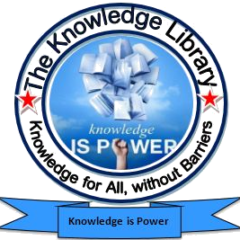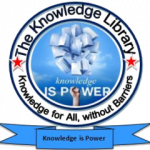Q. What is the primary purpose of the International Space Station (ISS)?
A) Tourism
B) Military operations
C) Scientific research
D) Space exploration
Answer: C) Scientific research
Q. What is the largest planet in our solar system?
A) Earth
B) Saturn
C) Neptune
D) Jupiter
Answer: D) Jupiter
Q. Who was the first American astronaut to orbit Earth?
A) Alan Shepard
B) John Glenn
C) Gus Grissom
D) Neil Armstrong
Answer: B) John Glenn
Q. What is the name of the first artificial satellite launched by the United States?
A) Vanguard 1
B) Explorer 1
C) Echo 1
D) Telstar 1
Answer: B) Explorer 1
Q. What is the closest planet to the Sun?
A) Venus
B) Earth
C) Mercury
D) Mars
Answer: C) Mercury
Q. Which space probe was the first to fly by Pluto?
A) Voyager 2
B) New Horizons
C) Pioneer 10
D) Cassini
Answer: B) New Horizons
Q. Who was the first person to walk on the Moon?
A) Neil Armstrong
B) Buzz Aldrin
C) Michael Collins
D) Alan Shepard
Answer: A) Neil Armstrong
Q. Which planet is known for its prominent ring system?
A) Uranus
B) Neptune
C) Saturn
D) Jupiter
Answer: C) Saturn
Q. What is the name of NASA’s mission to study Jupiter?
A) Cassini
B) Galileo
C) Juno
D) Voyager 1
Answer: C) Juno
Q. What is the largest moon of Saturn?
A) Europa
B) Ganymede
C) Titan
D) Callisto
Answer: C) Titan
Q. Which planet is often referred to as Earth’s “sister planet”?
A) Mars
B) Venus
C) Mercury
D) Neptune
Answer: B) Venus
Q. What is the name of the first space station launched by the Soviet Union?
A) Skylab
B) Mir
C) Salyut 1
D) ISS
Answer: C) Salyut 1
Q. Which space agency launched the Mars rover named “Curiosity”?
A) ESA
B) NASA
C) Roscosmos
D) ISRO
Answer: B) NASA
Q. Which is the smallest planet in our solar system?
A) Mercury
B) Pluto
C) Mars
D) Venus
Answer: A) Mercury
Q. What is the name of the galaxy that contains our Solar System?
A) Andromeda
B) Milky Way
C) Triangulum
D) Whirlpool
Answer: B) Milky Way
Q. Who was the first woman in space?
A) Valentina Tereshkova
B) Sally Ride
C) Mae Jemison
D) Svetlana Savitskaya
Answer: A) Valentina Tereshkova
Q. What is the brightest star in the night sky?
A) Polaris
B) Betelgeuse
C) Sirius
D) Vega
Answer: C) Sirius
Q. What was the first space shuttle launched by NASA?
A) Challenger
B) Columbia
C) Discovery
D) Atlantis
Answer: B) Columbia
Q. Which planet has the most extensive system of rings?
A) Jupiter
B) Uranus
C) Neptune
D) Saturn
Answer: D) Saturn
Q. What is the name of the first satellite to photograph the far side of the Moon?
A) Luna 1
B) Pioneer 4
C) Luna 3
D) Zond 3
Answer: C) Luna 3
Q. What is the approximate age of the universe?
A) Q.6 billion years
B) Q.5 billion years
C) Q.8 billion years
D) 20 billion years
Answer: C) Q.8 billion years
Q. What is the term for a dying star that explodes?
A) Nova
B) Supernova
C) Quasar
D) Pulsar
Answer: B) Supernova
Q. Which planet has a day that is longer than its year?
A) Venus
B) Jupiter
C) Mercury
D) Neptune
Answer: A) Venus
Q. What is the name of the region beyond Neptune that contains many small icy bodies?
A) Asteroid Belt
B) Kuiper Belt
C) Oort Cloud
D) Scattered Disc
Answer: B) Kuiper Belt
Q. Which was the first artificial object to leave the Solar System?
A) Voyager 1
B) Pioneer 10
C) Voyager 2
D) New Horizons
Answer: A) Voyager 1
Q. What is the term for a comet’s bright, glowing head?
A) Coma
B) Nucleus
C) Tail
D) Corona
Answer: A) Coma
Q. Which moon is known to have active volcanoes?
A) Titan
B) Europa
C) Ganymede
D) Io
Answer: D) Io
Q. What is the main component of the Sun?
A) Hydrogen
B) Helium
C) Oxygen
D) Carbon
Answer: A) Hydrogen
Q. Which mission was the first to successfully land on Mars?
A) Viking 1
B) Mariner 4
C) Mars Pathfinder
D) Spirit
Answer: A) Viking 1
Q. Who was the first American to travel into space?
A) John Glenn
B) Neil Armstrong
C) Alan Shepard
D) Gus Grissom
Answer: C) Alan Shepard
Q. Which planet has the fastest winds in the solar system?
A) Saturn
B) Jupiter
C) Neptune
D) Uranus
Answer: C) Neptune
Q. What is the name of the boundary where the Sun’s solar wind is stopped by the interstellar medium?
A) Heliopause
B) Magnetosphere
C) Asteroid Belt
D) Oort Cloud
Answer: A) Heliopause
Q. Which celestial object is known as the “Evening Star”?
A) Venus
B) Sirius
C) Mars
D) Mercury
Answer: A) Venus
Q. What is the main difference between a meteoroid and a meteor?
A) Composition
B) Size
C) Location
D) Speed
Answer: C) Location (Meteoroid is in space, meteor is in Earth’s atmosphere)
Q. Which space mission is known for bringing back the first samples from an asteroid?
A) Hayabusa
B) OSIRIS-REx
C) Rosetta
D) Galileo
Answer: A) Hayabusa
Q. Which space telescope was launched in 1990 and provided unprecedented images of space?
A) Chandra
B) Hubble
C) Spitzer
D) Kepler
Answer: B) Hubble
Q. What is the name of the second man to walk on the Moon?
A) Alan Shepard
B) Buzz Aldrin
C) Michael Collins
D) Pete Conrad
Answer: B) Buzz Aldrin
Q. Which of the following is the smallest type of star?
A) Red giant
B) White dwarf
C) Neutron star
D) Brown dwarf
Answer: C) Neutron star
Q. What is the term for the path that a planet follows around the Sun?
A) Axis
B) Orbit
C) Ellipse
D) Revolution
Answer: B) Orbit
Q. What is the name of the mission that successfully landed a rover on the far side of the Moon?
A) Luna 24
B) Chang’e 4
C) Chandrayaan-2
D) Artemis 1
Answer: B) Chang’e 4
Q. Which planet is known for its Great Red Spot, a giant storm?
A) Saturn
B) Mars
C) Neptune
D) Jupiter
Answer: D) Jupiter
Q. Which spacecraft was the first to perform a flyby of Jupiter?
A) Pioneer 10
B) Voyager 1
C) Galileo
D) Cassini
Answer: A) Pioneer 10
Q. Which of the following planets does not have any moons?
A) Mercury
B) Mars
C) Venus
D) Both A and C
Answer: D) Both A and C (Mercury and Venus)
Q. What type of galaxy is the Milky Way?
A) Elliptical
B) Irregular
C) Spiral
D) Lenticular
Answer: C) Spiral
Q. What is the name of the largest volcano in the solar system?
A) Mount Everest
B) Olympus Mons
C) Mauna Kea
D) Vesuvius
Answer: B) Olympus Mons
Q. What is the name of the spacecraft that recently explored the outer edges of the solar system?
A) New Horizons
B) Juno
C) Voyager 2
D) Cassini
Answer: A) New Horizons
Q. Which planet has the most eccentric orbit in our solar system?
A) Earth
B) Neptune
C) Mercury
D) Pluto
Answer: C) Mercury
Q. Which space mission brought back the first images of the surface of Venus?
A) Venera 9
B) Mariner 2
C) Magellan
D) Pioneer Venus
Answer: A) Venera 9
Q. Who was the first person to fly in space twice?
A) Gus Grissom
B) Yuri Gagarin
C) John Glenn
D) Neil Armstrong
Answer: A) Gus Grissom
Q. Which dwarf planet is located in the asteroid belt?
A) Pluto
B) Haumea
C) Eris
D) Ceres
Answer: D) Ceres
Q. Which planet’s moons are named after characters from Shakespeare’s plays?
A) Jupiter
B) Saturn
C) Uranus
D) Neptune
Answer: C) Uranus
Q. What is the name of the first spacecraft to land on an asteroid?
A) NEAR Shoemaker
B) Hayabusa
C) Rosetta
D) Dawn
Answer: A) NEAR Shoemaker
Q. Which planet has the longest day (in terms of time it takes to complete one rotation on its axis)?
A) Venus
B) Mars
C) Neptune
D) Uranus
Answer: A) Venus
Q. Which moon is the largest in the solar system?
A) Titan
B) Ganymede
C) Callisto
D) Europa
Answer: B) Ganymede
Q. Which country was the first to successfully land a spacecraft on the far side of the Moon?
A) USA
B) Soviet Union
C) China
D) India
Answer: C) China
Q. What is the term for the point in an orbit closest to the Earth?
A) Apogee
B) Perigee
C) Zenith
D) Nadir
Answer: B) Perigee
Q. What is the name of the boundary around a black hole beyond which nothing can escape?
A) Photon Sphere
B) Singularity
C) Event Horizon
D) Accretion Disk
Answer: C) Event Horizon
Q. Which planet has a surface temperature hot enough to melt lead?
A) Mercury
B) Venus
C) Mars
D) Jupiter
Answer: B) Venus
Q. What was the name of the first successful US human spaceflight program?
A) Gemini
B) Apollo
C) Mercury
D) Skylab
Answer: C) Mercury
Q. Which star is the closest to Earth after the Sun?
A) Alpha Centauri A
B) Proxima Centauri
C) Barnard’s Star
D) Sirius
Answer: B) Proxima Centauri
Q. When is National Space Day celebrated?
A) First Friday in May
B) Second Monday in April
C) Last Sunday in June
D) First Wednesday in October
Answer: A) First Friday in May
Q. Who was the first human to journey into outer space?
A) Neil Armstrong
B) Yuri Gagarin
C) Buzz Aldrin
D) John Glenn
Answer: B) Yuri Gagarin
Q. What was the first artificial satellite to orbit Earth?
A) Apollo 11
B) Sputnik 1
C) Explorer 1
D) Vostok 1
Answer: B) Sputnik 1
Q. Which planet is known as the “Red Planet”?
A) Venus
B) Jupiter
C) Mars
D) Saturn
Answer: C) Mars
Q. What is the name of NASA’s most famous space telescope?
A) Hubble Space Telescope
B) James Webb Space Telescope
C) Spitzer Space Telescope
D) Chandra X-ray Observatory
Answer: A) Hubble Space Telescope
Q. What was the name of the first successful Mars rover?
A) Opportunity
B) Spirit
C) Curiosity
D) Sojourner
Answer: D) Sojourner
Q. Which space mission first landed humans on the Moon?
A) Apollo 10
B) Apollo 11
C) Apollo 12
D) Apollo 13
Answer: B) Apollo 11
Q. Which planet in our solar system has the most moons?
A) Earth
B) Mars
C) Saturn
D) Jupiter
Answer: D) Jupiter
Q. What is the name of the first American woman in space?
A) Sally Ride
B) Mae Jemison
C) Valentina Tereshkova
D) Eileen Collins
Answer: A) Sally Ride
Q. Which spacecraft is the farthest human-made object from Earth?
A) Voyager 1
B) New Horizons
C) Pioneer 10
D) Cassini
Answer: A) Voyager 1
Post Views: 12



 Users Today : 6
Users Today : 6 Total views : 643387
Total views : 643387